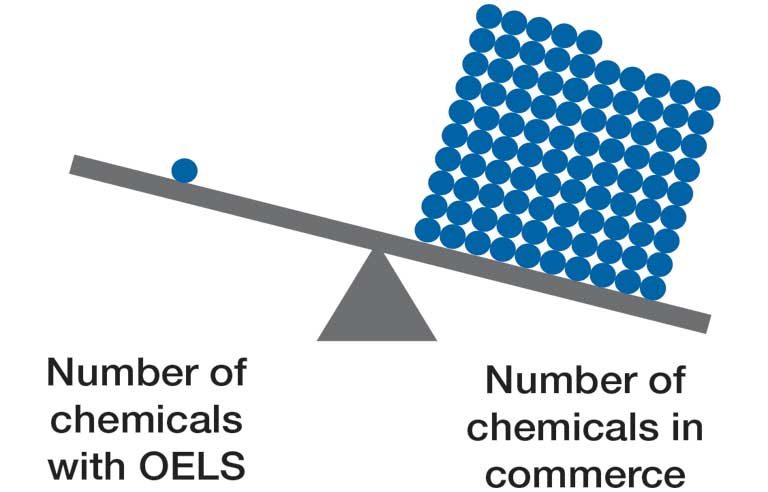NIOSH report details role of exposure banding in chemical management

Washington — NIOSH has published a technical report intended to help safety and health professionals, employers, trade associations, labor organizations, and state-level programs control chemical exposures in the workplace.
The NIOSH Occupational Exposure Banding Process for Chemical Risk Management, released in July, details a strategy for managing the many chemical substances that don’t have an authoritative occupational exposure limit. About 99% of the more than 85,000 commercially available chemicals in the United States fall under that category. NIOSH defines an “authoritative limit” as one that comes from consensus, government or peer-reviewed sources.
The strategy relies on banding, or categorizing chemical substances based on their toxicity and potential adverse health outcomes resulting from exposure. Occupational exposure banding is also known as hazard banding or health hazard banding.
“The occupational exposure banding process is not meant to replace quantitative occupational exposure limits (OELs); rather, it is a voluntary approach which provides a starting point to inform risk management decisions for controlling chemical substances that do not have OELs,” NIOSH states in a July 10 press release.
The agency also has developed a supplemental e-tool to use as an automated method to band chemical substances.
“NIOSH has devoted significant efforts to develop, assess and validate the occupational exposure banding strategy with the overall goal of reducing safety and health risks for workers,” NIOSH Director John Howard said in the release. “In the absence of formalized OELs, the exposure banding approach serves to identify workplace hazards and helps employers implement control strategies that keep workers safe on the job.”
Post a comment to this article
Safety+Health welcomes comments that promote respectful dialogue. Please stay on topic. Comments that contain personal attacks, profanity or abusive language – or those aggressively promoting products or services – will be removed. We reserve the right to determine which comments violate our comment policy. (Anonymous comments are welcome; merely skip the “name” field in the comment box. An email address is required but will not be included with your comment.)

